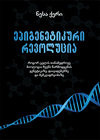

The 3 billion base pairs that constitute the human genome is the sequence of covalently bonded nucleic acids-adenine (A), thymine (T), cytosine (C), and guanine (G)-that form the double helix of DNA. Before we explore epigenetics, we need to review the foundational field of genetics. Without much fanfare, our understanding of epigenetics has been a significant paradigm shifter. This study is but one of a growing number of publications demonstrating the essential role of epigenetics in animal development, health, and disease.


The team then demonstrated that treating the mice during exposure to early life stress with pinometostat, a drug currently in clinical trials to treat acute myeloid leukemia in humans, inhibited the enzyme responsible for this epigenetic methylation modification and decreased the effect of early-life stress exposure on stress later in life. In the May 2021 issue of Nature Neuroscience, a research team at Icahn School of Medicine at Mount Sinai Health System in New York City made a fascinating discovery: Early life stress in mice resulted in an epigenetic modification of methyl groups on histone-3 in neurons in the nucleus accumbens, which in turn led to a lifelong increase in the mice’s vulnerability to stress.


 0 kommentar(er)
0 kommentar(er)
